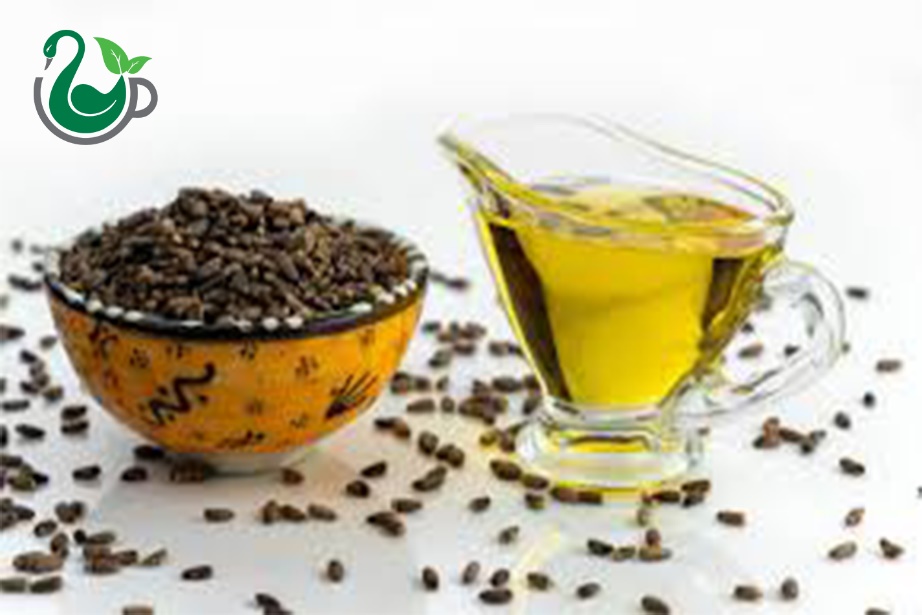Milk thistle leaves, sprouts, young stems, and flowers are eaten as vegetables in soups and salads. For more than 2000 years, people have used its fruits and seeds as natural remedies for biliary and liver disorders. Recent studies have focused on the antiatherosclerotic, anticarcinogenic, antioxidant, anti-inflammatory, and anti-diabetic properties of this medicinal herb.
Milk thistle's main active ingredient is silymarin, a blend of flavonolignans that includes silibinin, silidianin, and silychristin. The fruit, seed, root, stem, and leaves of the plant all contain silymarin, but the concentration is highest in the seeds.
In addition to silymarin, milk thistle seeds have a high oil content (20–30% by weight). Milk thistle oil is a valuable byproduct of the extraction of silymarin since the oil from the seeds needs to be extracted first. Studies suggest that milk thistle oil could serve as an edible oil.

In 2014, China's Ministry of Health approved milk thistle oil as a new edible oil resource, allowing it to be used in a variety of food products other than infant food.
The composition of milk thistle oil varies according to the extraction method utilized.
Milk thistle oil is renowned for its high content of unsaturated fatty acids, particularly linoleic (omega 6) and oleic (omega 9) acids, which offer health benefits such as preventing arteriosclerosis, diabetes, and cancer.
Milk thistle oil has also been recommended as a natural antioxidant source due to its high vitamin E concentration. Despite its increasing popularity, little is known about the constituents and characteristics of milk thistle oil.
For this reason, a 2024 study was conducted on Iranian milk thistle seed oil, which was extracted by the cold pressing method, in the Laboratory Complex of Newsha Herbal Drink (Kajan) Company, Tehran, Iran. This study, published in the SCIREA Journal of Food, provides the following results:
1. Chemical composition of milk thistle seed: The oil content of milk thistle seeds was about 21 g/100 g, which is almost similar to soybeans (18–22 g/100 g), the most common oilseed in the world.
2. Fatty acid composition of milk thistle oil: The fatty acid composition of milk thistle oil is an important feature that greatly affects the physical, chemical, and nutritional qualities of the oil. The variations observed indicate that the composition of fatty acids is influenced by both geographical location and genotype. The findings indicate that milk thistle oil consists of 47.28% polyunsaturated fatty acids (PUFA), primarily omega-6, 30.66% monounsaturated fatty acids (MUFA), primarily omega-9, and a smaller proportion of 22.06% saturated fatty acids.
3. Triacylglycerol composition of milk thistle oil: Triacylglycerol (TAG) is the predominant constituent of vegetable oil, representing more than 98% of its composition. The study of TAG species is essential for understanding the physical and chemical characteristics of vegetable oil. This study revealed at least 27 types of TAG, with OLL being the most prevalent, accounting for approximately 20.21%.
4. Phytosterol composition of milk thistle oil: Phytosterols are advocated for inclusion in edible oil because they can lower levels of LDL cholesterol in the blood and have positive effects in reducing inflammation and fighting tumors. In this investigation, the cold-pressed milk thistle oil included delta-7-stigmastenol (36.57%) and sitosterol (28.97%) as the most abundant phytosterol components.
5. Vitamin E composition of milk thistle oil: Vitamin E is an antioxidant that can improve the susceptibility of vegetable oils to oxidation. This study compared the vitamin E content of cold-pressed oil with that of solvent-extracted oils. Cold-pressed milk thistle oil showed a higher vitamin E content than solvent-extracted oils. Vitamin E is mostly composed of tocotrienols and tocopherols. In this study, α-tocopherol was known as the most abundant vitamin E isomer in cold-pressed oil. Therefore, alpha-tocopherol accounted for 527.89 mg/kg of the total vitamin E content in cold-pressed oil (645.47 mg/kg).
These results increase our knowledge about milk thistle oil and its possible uses in the cosmetic, pharmaceutical, and food industries.
- Amini, Z., Azizian, A., & Eyvazi, A. (2024). Investigate the components and thermal behavior of milk thistle seed oil. SCIREA Journal of Food, 5(1). Retrieved from https://doi.org